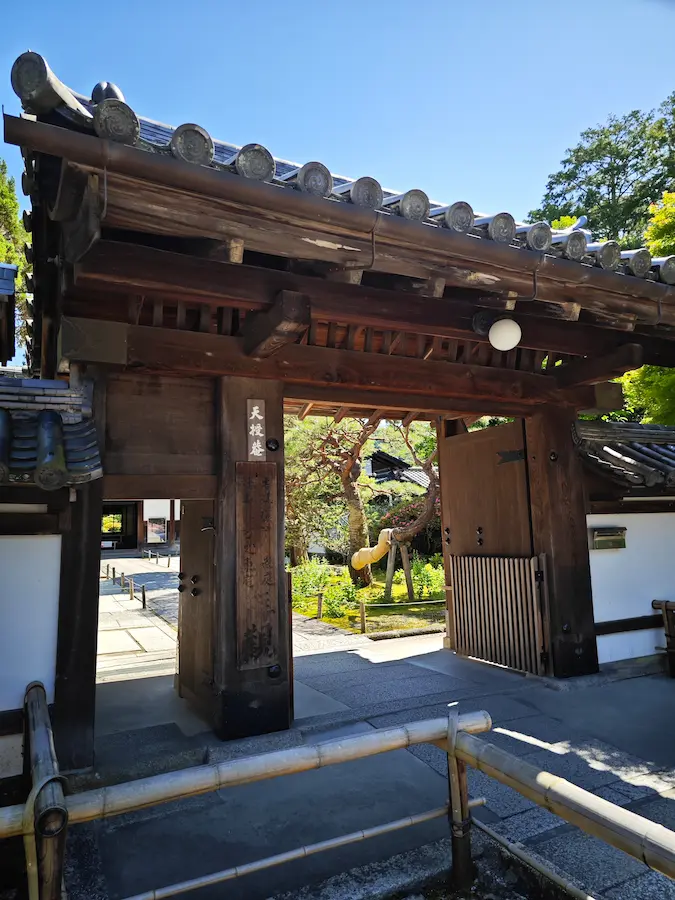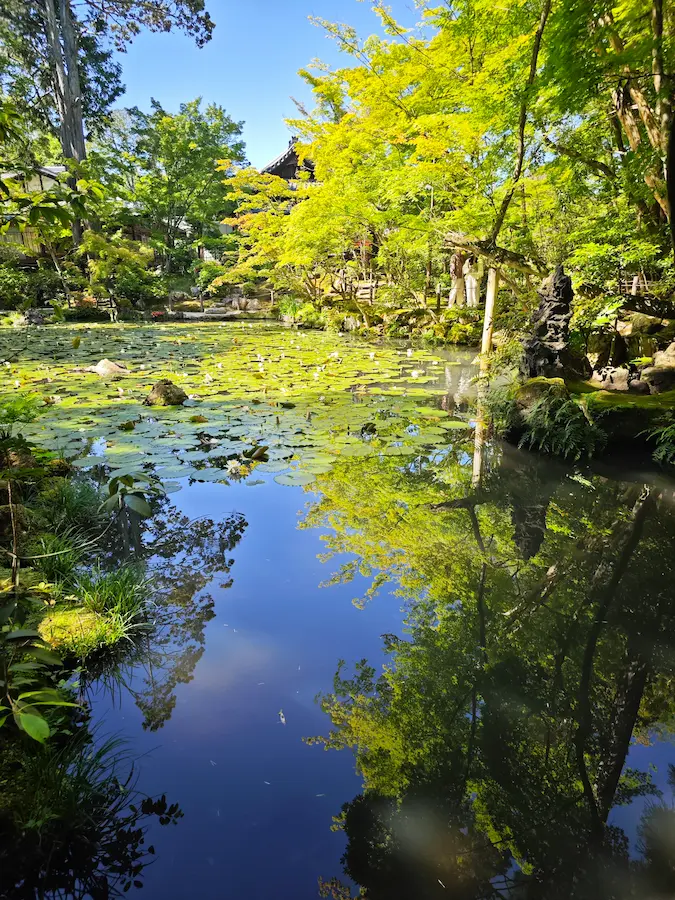Tenju-an Temple, a sub-temple of Nanzenji Temple, is a historic Zen temple in the Sakyo Ward of Kyoto City. It belongs to the Rinzai sect’s Nanzen-ji branch. The temple was founded in 1339 during the early Northern and Southern Courts (Nanbokucho) period. It was established by Kokan Shiren, the 15th abbot of Nanzenji, with the imperial permission of Emperor Kogon, to enshrine Daimei Kokushi, the founding master of Nanzenji.
After that, through the tumultuous times of the Onin War (1467–1477) and other conflicts, it underwent repeated repairs and reconstructions. During the Momoyama period, the temple was revived by Monk Ungaku Ryoei. He has a relationship with the Sengoku daimyo and renowned tea master Hosokawa Fujitaka (also known as Hosokawa Yusai).

Cultural Properties
Tenju-an Temple houses numerous valuable cultural properties. Notably important are the sliding door paintings by Hasegawa Tohaku. They are designated as Important Cultural Properties. Additionally, the temple preserves many ancient documents and artworks, which are crucial for understanding the culture and history from medieval to early modern Japan.
Tenju-an Gardens
The gardens of Tenju-an are a in two styles. There are a karesansui (dry landscape) garden and a chisen-kaiyu-shiki (pond-strolling) garden. The karesansui garden uses rocks and white sand to depict landscapes, reflecting Zen philosophy.

In contrast, the chisen-kaiyu-shiki garden allows visitors to stroll around a pond while enjoying the scenery.

It offers different views through the seasons. In spring, cherry blossoms bloom. Then in summer, the lush greenery thrives. In autumn, the foliage turns vibrant red and orange. And in winter, the garden is enchanting under the snow, captivating visitors throughout the year.
Best Season to Visit Tenju-an
The best season to visit Tenju-an Temple is undoubtedly during the autumn foliage period. From mid to late November, the trees in the garden turn vivid red and orange, creating a breathtaking scene beyond words. Besides autumn, the cherry blossom season in spring is also recommended. In early April, the cherry trees in the garden are in full bloom, creating a spectacular view in soft pink hues. The lush green scenery in summer and the serene snow-covered landscape in winter each offer unique charms in their respective seasons.
Access and Tips
Tenju-an can be reached by getting off at Keage Station on the Kyoto Municipal Subway Tozai Line and walking for about 10 minutes. As it is located within the precincts of Nanzenji, visitors can also explore other sub-temples and the main hall of Nanzenji. When visiting, please adhere to the temple’s rules and maintain a quiet environment. Especially in the garden, be mindful not to disturb other visitors when taking photos.
Tenju-an captivates many tourists with its historical significance, beautiful gardens, and preserved cultural properties. When visiting Kyoto, be sure to stop by. Immersing yourself in the seasonal landscapes and the serene atmosphere will undoubtedly provide relaxation and peace for your mind and body.
Nearby spots of Tenju-an
There are several sub-temples of Nanzenji Temple. Such as Konchiin Temple, Nanzenin Temple and Saishoin Temple.
Related articles:
[…] Tenju-an Temple, another sub-temple near the Sanmon Gate of the Nanzenji Temple, is famous for its beautiful gardens. […]